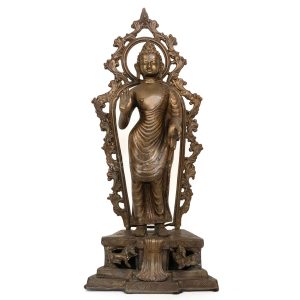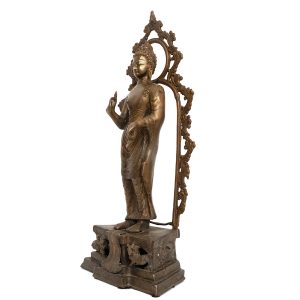Vintage Brass Buddha with Aureole, Nepal (30611LEM) $790
$790.00This finely cast metalwork brass Shakyamuni Buddha reflects the conservative tradition of Nepalese sculpture which experienced few changes in proportion or decorative details over the past several hundred years. Originating stylistically from Gupta and later Pala Indian art, Nepalese artists created their unique style from the 6th-7th centuries that evolved to a distinctive physiognomy including…


